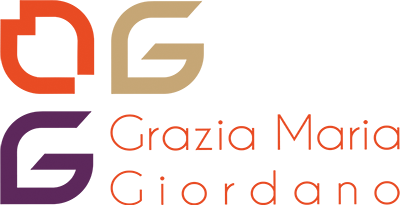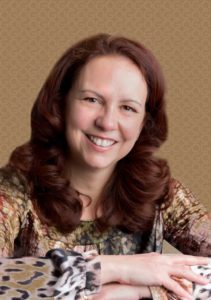In my exploration of Human-Centered Design in the Procurement function, it’s now time to explore how to make the most of your projects with workshops, which are the top tool designers use.
In the past blogs, I’ve introduced the possible applications of Human-Centered Design in the Procurement area. I’ve highlighted how it can bring several benefits in how policies are designed and implemented, how to approach the procurement of services and also how to create a deeper and more satisfactory relationship with the stakeholders.
How all this comes to life is through workshops!
The topic is hot: how people meet, discuss and carry on the daily activities has dramatically changed since the Covid-19 pandemic struck. And in this new context, the weakness of the traditional approach to meetings & problem solving has emerged.
Long & boring, back-to-back, zoom meetings, where the discussion goes on & on with no results. Participation in these meetings is abysmal as meeting participants tend to multitask behind the black square of a switched-off webcam. In general, people are more passive and disengaged.
So if you want to make the most of your projects with workshops, this is the right moment!
What is a workshop?
A workshop consists of a group of people, tackling a challenge by going through a set of exercises within a precise timebox.
Let’s analyze the definition.
A group of people: at the core of the workshop method there’s the team. The idea is to bring together on the same board, all the people that, at a different level, are impacted or can impact the challenge you want to address. The operative word here is multidisciplinary: the diverse backgrounds, experience, and education allow to analyze the challenge from multiple points of view fully leveraging the collective intelligence of the team.The ideal size of a team is between 5 and 8. It’s possible to have a workshop with a higher number of people (I’ve facilitated workshops with 90 people!). In this case, planning is crucial! Depending on the challenge, also workshops with a minimal number of people can be managed. Again, to protect effectiveness, accurate planning is vital!
Tackling a challenge: The challenge is what the team needs to work on. I prefer to talk about a challenge and not an issue or a problem. A workshop can help address any topic in any form. I’ve facilitated workshops addressing topics ranging from Customer Experience Improvement to needs and functionalities needed for a new system, passing through what are the issues that people want to be covered by an industry-specific event. When choosing a challenge, it’s essential that it is specific enough to move to action but also broad enough to be addressed in more than one way. It also needs to be appreciated from different perspectives, benefiting of a multidisciplinary team.
Set of exercises: the team carries out some activities that are called exercises. The Facilitator prepares these (see also below: The Facilitator) and have the objective to allow the team to analyze the challenge, decide what’s worth to move forward further and to eventually understand how to address it (see also below: how workshops work). Exercises follow a flow that allows the team to go on a journey of exploration of solutions while keeping the progression on track and reducing unproductive deviations. In a physical setting, the exercises are carried out on a whiteboard with sticky notes. Sticky notes are critical to the success of the workshop: they help make ideas visible, encourage sharing and make collaboration easier. In a virtual setting, traditional whiteboards are replaced by virtual whiteboards. The team uses virtual sticky notes instead of physical ones! The use of sticky notes and a board is one of the critical differences between workshops & meetings. The traditional setting for a meeting is around a table with one person doing the talk and the others “listening”. In a workshop, everybody works at the same time on the board. It’s a very “hands-on on” activity: everybody is actively engaged, and interaction and participation are always ensured.
Within a precise timebox: One of the main issues with traditional meetings is the time waste and the reduction of focus over time. Workshops put a remedy on this by allowing relatively short time (a timebox!) to complete the exercises. The timebox help stimulates quick reactions from the team and keeps the focus on the goal to be achieved.
To fully grasp how to make the most of your projects with workshops, let’s look at how workshops work in reality, which is what makes them super useful!
How a workshop works
Every workshop starts with a Check-in that invites participants to be present, focused and committed. Check-in is also functional to increase the mutual knowledge of the team members, creating the foundations for trust & collaboration.
During the workshop, the Facilitator will include some Icebreakers & energizers. These are simple (and funny) activities which have the objective to create the right mindset & lift the energy level of the team.
At the end of the workshop, the team follows a Check-out inviting reflection on the process and the results of the workshop itself.
Exercises are designed and proposed to follow a bulletproof approach, that is called the 4Cs framework.
- Collect: exercises to collect information on the challenge to be addressed and where the team forms a general idea of the challenge
- Choose:exercises to decide on which area(s) identified in the previous phase the team wants to focus on
- Create:exercises to generate ideas about how to address the challenge
- Commit:exercises where the team decides which of the ideas generated is the one to move forward.
In practice, exercises are completed with the Note, Stick, Vote, Prioritize method.
Note: Participants write their ideas about the challenge they’re facing on a sticky note. In the beginning, everyone works alone and in silence in what we call Together alone (together but alone)
Stick: Sticky notes are hung on a whiteboard. Sticky notes with similar ideas/common themes are then clustered together.
Vote: Participants vote for ideas.
Prioritize: the different ideas are finally prioritized.
The application of the framework ensures that there’s both a creative process and a conclusive synthesis that expresses the fruit of collaboration and mutual contamination.
The last bit to make the most of your projects with workshops, it’s to understand the role of the Facilitator.
The Facilitator
The Facilitator creates the structure and the environment to make collaboration easier.
The Facilitator plans the workshop and the exercises that will be completed during the workshop itself, having in mind the objectives and the output that the workshop aims to achieve.
The Facilitator owns of the process and not of the contents: it makes the process more effective and efficient, ensuring more balanced decisions and a shared result
The role of the Facilitator can be summarized as follows:
- Encourage everyone’s participation
- Promote mutual understanding
- Favor the generation of inclusive solutions
- Cultivate shared responsibility for the decisions taken
The role of Facilitator is functional to the success of a workshop. And as such, it’s useful that he/she is a person outside the team working on the challenge and the team’s organization.
It’s, in fact, nearly impossible for one person to lead a discussion, record key points and make a meaningful contribution.
An external facilitator for meetings and workshops ensures that people inside the organization can be fully involved in the discussions and can actively contribute with knowledge and insights unique to the organization rather than focusing on the process and documenting the discussions.
Further to that, a facilitator external to the organization brings an independent perspective that allows to better manage alternative points of view between participants and keep the meetings on track.
The Facilitator has specific expertise in facilitation tools and methods, which he/she brings all to build the best possible project.
It might also be more comfortable for the team to learn and accept new ways of working when an external Facilitator is involved.
By now, it should be clear how to make the most of your projects with workshops. Let’s have a quick recap!
Why a workshop?
It should be clear by now why workshops can provide a valid alternative to traditional meetings:
– They are practical and efficient, thanks to the pre-set structure of exercises and the timebox
– They cut out all unnecessary discussion and ensure that valuable ideas are not lost
– They guarantee the active participation of all and generate a high level of involvement and enthusiasm
– They bring together different intelligencies and allow you to tackle a problem from multiple points of view
Workshops create a safe space where people can create and experiment!
Are you ready to give workshops a go?
Want to know more on how to use human-centered design in the procurement area? Read my other blogs on the topic:
The dawn of a new Procurement – Reignite your business with a partnership for growth
Make the difference with services procurement
Policies by design: 5 steps to improve your internal policies management
The “Stakeholder whisperer”: effective stakeholder management for successful projects!
Want to know more about the workshop method? Have a look at the videos on my YouTube Channel!






